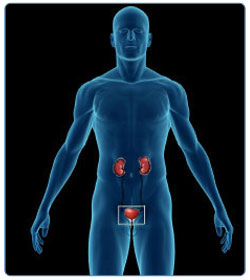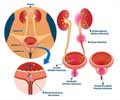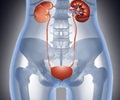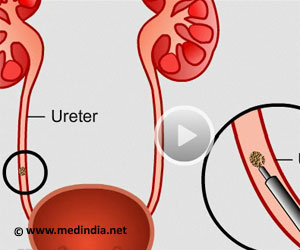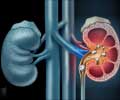Treatment of Urinary Stones
1.CONSERVATIVE MANAGEMENT
It is usually the
If a patient has severe
Some cases where the stone causes severe obstruction and
2.EXTRA CORPOREAL SHOCK WAVE LITHOTRIPSY
Extracorporeal Shock Wave Lithotripsy –Advanced
Extracorporeal shock wave lithotripsy is recognized world –wide as the most effective mode of treatment for
It is a non – operative technique with no necessity for
The ESWL procedure usually lasts for about 40 minutes.But depending on the size and number of stones,more than one session may be required for proper breaking of the stones.
Patients may be required to remain in the
3.URETEROSCOPIC STONE REMOVAL
It is ideally suited for stones in the lower portion of the ureter. It involves the passage of an instrument namely ureteroscope through your urinary passage. The instrument is as thick as a pen and is about 40 cm long. You may have to be admitted in the hospital for a few days (2-3 days) for this procedure and it has to be done under anaesthesia.
A variety of other instruments can be passed in through the scope which can be used to break the stones and remove them. Very rarely it may so happen that the stone cannot be removed by this method in which case open surgery may be needed.
4.PERCUTANEOUS NEPHROLITHOTRIPSY
This procedure is ideally suited for very large calculi within the kidney and the upper ureter. In this procedure, a puncture is directly made on to the kidney, the stone is seen with a telescope, broken into fragments and the fragments removed.
In some cases, it may not be possible to remove the entire stone. So a combination of other procedures like ESWL has to be done to ensure that the stone is completely removed.
5. OPEN SURGERY
With the advent of new technologies to treat stone disease, the need for open surgery has been drastically reduced. But in some cases it might be required. The type of open surgery will depend upon the site and size of the stone within the urinary tract.

